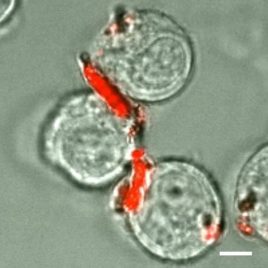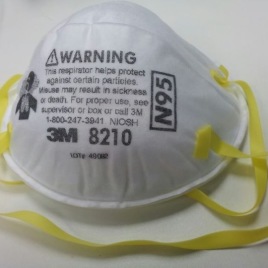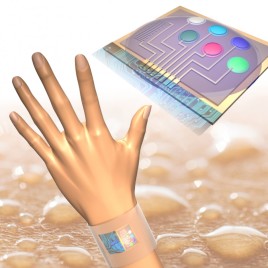In the past 15 years, there’s been a move to reduce the number of hours doctors spend on shift in the residency phase of their training, with the intention to improve patient safety and the doctors’ work-life balance. However, a recent review study suggests that such measures aren’t beneficial across the different specialties – in […]
Tag: medicine
Restoring movement to a quadriplegic patient
Researchers have successfully restored some movement to the fingers, hand, and wrist of a quadriplegic patient by using recorded signals from his motor cortex, allowing him to perform daily living activities such as pouring from a bottle and stirring the contents. Systems that work by translating neural activity into signals for robotic devices, such as […]
Successfully creating insulin-producing beta cells in the lab
Researchers have created insulin-producing cells in a petri dish for the first time, moving closer to finding a potential cure for diabetes. The researchers discovered a switch that makes it “possible to produce a functional human beta cell that’s responding almost as well as the natural thing,” according to Ronald Evans, senior author and a […]
Learning from the naked mole rat
When most mammals, including humans, are in a low-oxygen environment they begin to hyperventilate to increase their oxygen uptake. However this is an energetically costly way to increase oxygen levels in the body. The naked mole rat is unique from other mammals; when it is exposed to hypoxia (low oxygen levels) it does not begin […]
The next miracle cure – exercise
Physical activity and specific exercises have been shown to be effective in alleviating the symptoms of many chronic health conditions such as knee osteoarthritis, low back pain, and chronic obstructive pulmonary disease (COPD). However a new review shows these exercises are being under-prescribed by physicians. The authors suggest this is due to a lack of […]
Measuring the munchies – how much THC is in marijuana edibles?
A new way to more accurately measure the amount of cannabinoids in marijuana edibles was presented at the meeting of the American Chemical society March 15, 2016. In the past measurements were frequently inaccurate as the sugars, fats, and starches found in most edibles would clog the analytical device. By using dry-ice and a silica […]

Improving the cellular backpack
Medicine can be delivered to specific parts of the body by fitting it inside a “backpack” and attaching it to white blood cells. This targeted drug delivery means other tissues of the body aren’t affected, and side effects are limited. Original research presented at a meeting of the American Chemical Society on March 17, 2015.
Growing hearts in 3D
Growing realistic human tissue outside the body is now possible thanks to the recently developed “person-on-a-chip” according to researchers at University of Toronto. The new technology, called AngioChip, could one day be used to repair or even replace damaged organs. In the meantime the researchers believe their development offers a new tool for discovering and testing […]

Improving cataracts outcome using stem cells
A new study is showing that preserving the stem cells within the eye might be a more effective way to treat cataracts, at least in children. Researchers surgically removed the damaged lens using a new technique that allowed them to preserve the lens epithelial stem cells. The minimally invasive surgery facilitated functional lens regeneration in […]

Protecting healthcare workers – Masks v. Respirators
Respirators and surgical masks both help protect health workers from respiratory infections, however there has been a debate about which is more effective and different guidelines provide different recommendations. A review of the accumulated evidence does not suggest that the N95 respirator is superior to surgical masks. The authors suggest a randomized controlled trial, […]

Printing living bones may be possible
Printing bones and cartilage could be the way of the future. Using specialized ‘bioprinters’, researchers have been able to “print” cells into layered patterns reconstructing human body parts. Current 3D printers are unable to create bone and cartilage with enough structural stability. By combining bioprinters with biodegradable polymer materials researchers were able to “create” the […]
Lab in a suitcase provides real-time monitoring of Ebola 
Testing the DNA of the Ebola virus on-site in the field in less than a day is now possible thanks to a new system developed by researchers. Real-time genomic surveillance will provide information on the virus and its rate of evolution – as well as characterizing its response to treatments and vaccines. The kit weighs […]

Monitoring biomarkers in real-time
Wearable sensors which measure levels of molecules in a patient’s sweat are now able to provide real-time information on an individual’s physiology and health. Sweat contains much information in the form of metabolites such as glucose, and electrolytes such as sodium, which could be used to help diagnose diseases or identify drug use. The developers […]

Genetically mapping the cause for schizophrenia’s synaptic loss
Mapping genetic variations has allowed researchers to identify a potential mechanism to explain the onset of schizophrenia. The authors hope this will provide insights into the risk of developing schizophrenia as well as the neurobiology of the disease. Variations in the genetic code controlling the production of C4, a protein known for the role it […]
Some antibiotics are increasing children’s’ health risks
Using a specific group of antibiotics changes the gut microbiota in children, leading to an increased risk of developing asthma and becoming overweight, according to a new study. This group of antibiotics, macrolides, are used as an alternative for individuals who are allergic to penicillin. Researchers analysed the fecal microbiota of 142 children (aged two […]
Studying autism with genetically modified monkeys
Genetically modified monkeys showing autism-like behaviours could help the development of strategies to treat the symptoms of autism disorders, according to researchers. Currently one of the major challenges for researchers studying autism spectrum disorders is the lack of animals models that reproduce symptoms typically found in human patients. These monkeys, and their offspring, show behavioural […]
